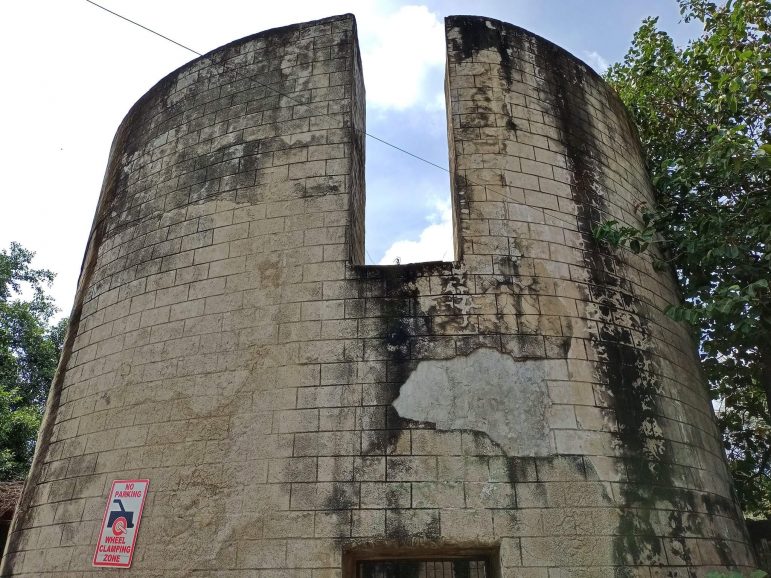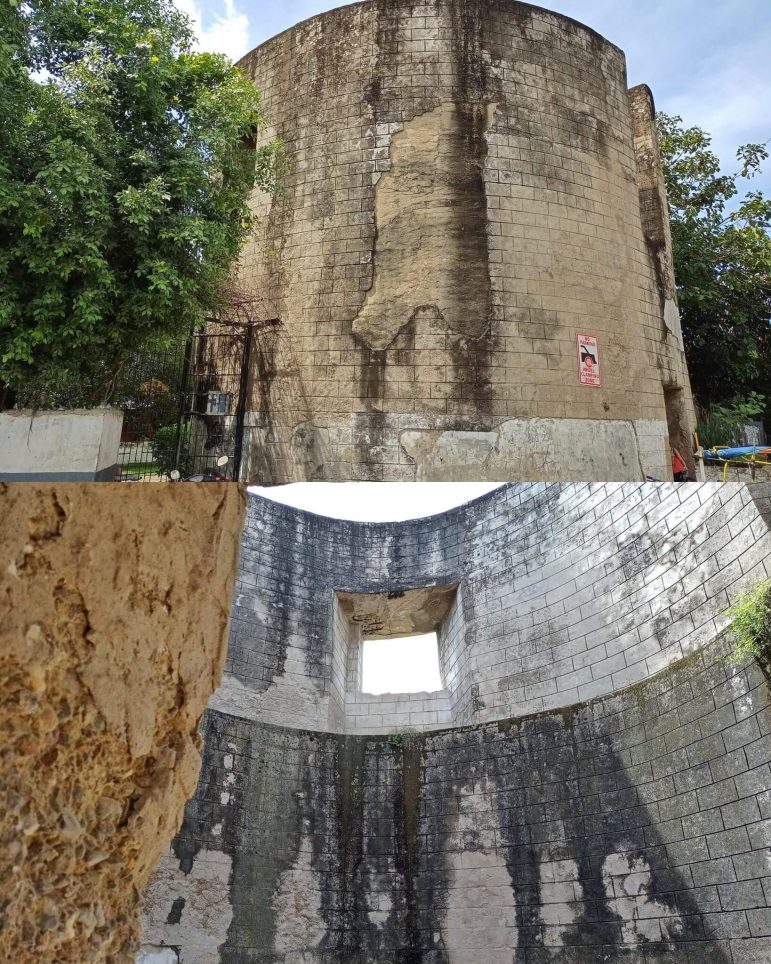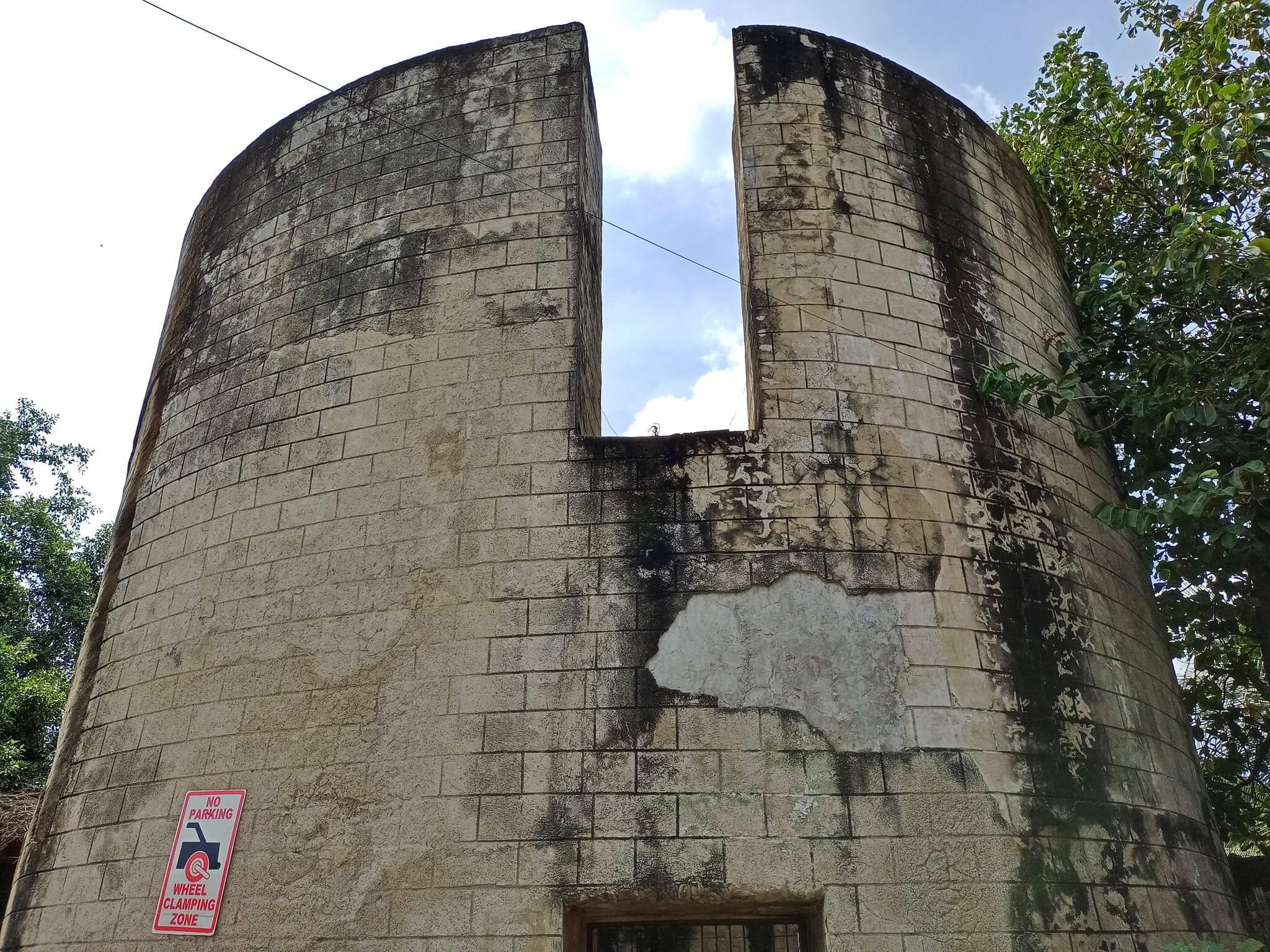I grew up thinking it was an abandoned jail.
During summer breaks as a kid, my friends and I would pass by this cylindrical structure going to and heading back from swimming near the coastal area of Cabahug. All of us thought it was an abandoned jail.
In sixth grade, we had a group project where we had to make a collage of existing historical places around Mandaue and Lapu-Lapu and our teacher provided us with three. Surprisingly, the abandoned jail was one of them as it was just close to our school.
Before we went to the different historical landmarks, our teacher provided us with background information and that was how I first found out that what I thought was an abandoned jail was actually a watchtower.
The Bantayan sa Hari in Looc, Mandaue City can be found just underneath the Sergio Osmeña Bridge, the first Mactan-Mandaue bridge. It was built in the early 1800s and is still intact but poorly restored, said archaeologist and historian Dr. Jobers Reynes Bersales of the University of San Carlos.

Bersales discussed the construction technology of watchtowers during the forum Baluarte Fortress of Defense and Reconquest organized by the Palm Grass The Cebu Heritage Hotel last June 12.
A watchtower or bulwark is where the sentinel or guard would watch over the surrounding area with the arrivals of Moro raiders. They were put up to alert communities on the arrival of the raiders who were out for booty and slaves.
The techniques of pirates in raiding have shifted from doing surprise attacks, so the people who were unaware couldn’t easily fight back or resist, to sneaking attacks as people have started to build defense structures, so they would be warned if dangers are assumed.
They lined the coast of Cebu – from Mandaue, Naga, Carcar, Argao, Dalaguete, Boljoon, Oslob, Santander, Samboan, to Pinamungajan.
In 2011, during Mayor Cortes’ administration, they also tried renovating the tower. The entire surface was concreted.

“The technology behind baluartes and churches is inspired by the Romans. The procedure is combining coral rubble, lime, shells, then burn it until it become powderized, then the powdered lime is hydrologized for about 60-90 days, then mix “law-at” (juice of the law-at tree) – leaves are boiled until it appears a sticky texture,” Bersales said.
When asked about who were responsible for building the defense structures. “The native elites, principalia, but the construction of these structures were initiatives and combined efforts of ordinary natives because they were afraid of the raiders or intruders.” he added.
“The reason why the watchtower is in line with the church of Mandaue St.Joseph Parish, is that it served as the immediate refuge of the villagers in times when the raiders are about to roam the community,” said Adelaida Casinillo, citing information she said was told her in elementary.
The changes of the tower’s appearance as well as how the surrounding area have become populated couldn’t stop people from visiting the site.
Aside from learning about the history of Bantayan sa Hari, the site is also a good place to have your photos taken. Beside the tower is a beautiful garden.
The present state of the Bantayan sa Hari should call the attention of the government to also lend time in preserving the few historical landmarks that are around. Far from being a mere abandoned structure, it is an importance piece of Mandaue history.

